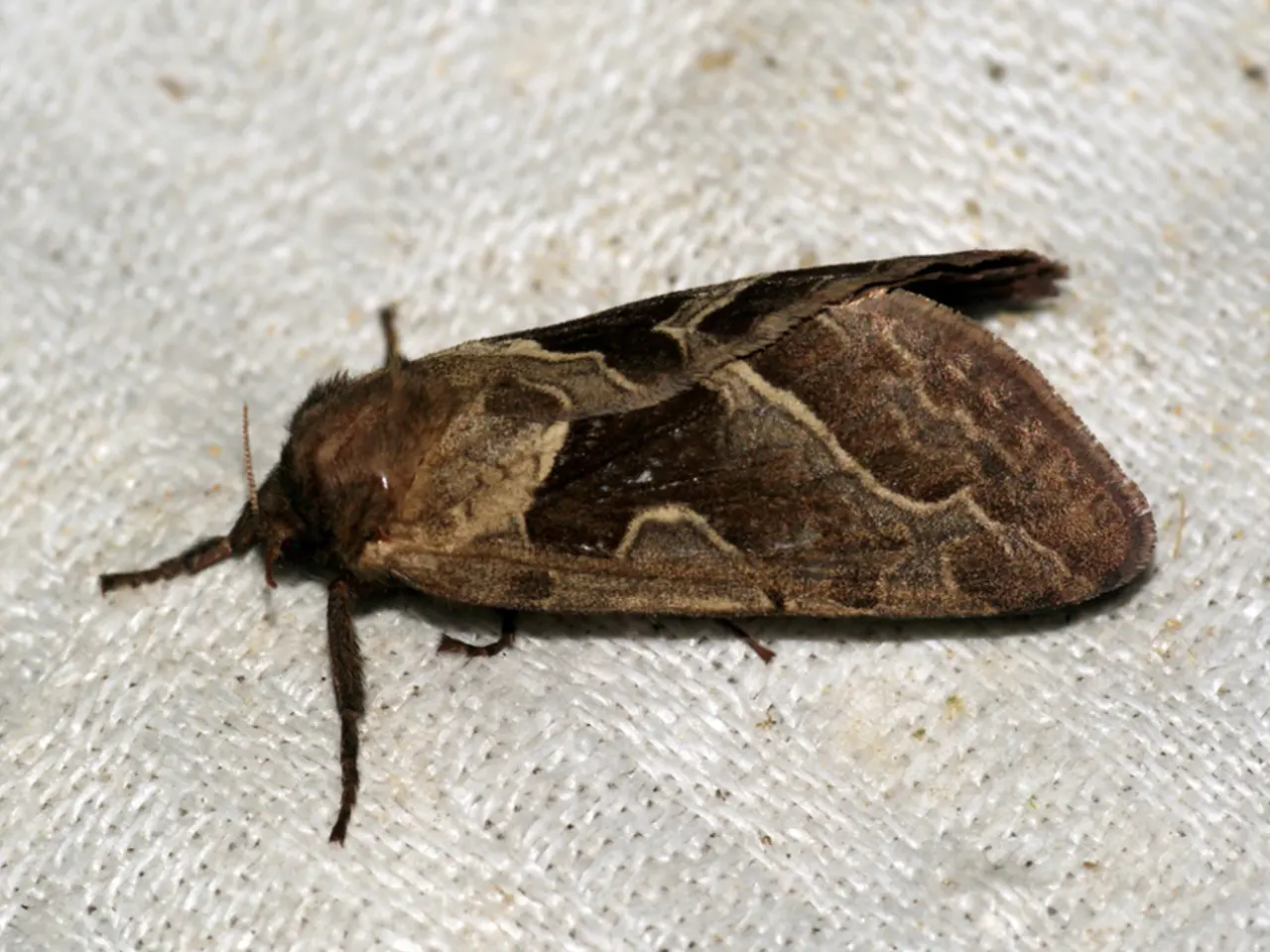Bite from a Tick: Explanation of Diseases, Symptoms, and Risk Factors
In the warmer months, particularly spring and summer, small parasites known as ticks become active. These creatures, which are related to spiders, can pose a threat to human health by transmitting various tick-borne diseases. This article aims to provide a comprehensive guide on the symptoms, prevention, and treatment of these diseases.
Ticks require blood to complete their life cycle and may bite humans. Common tick-borne diseases in the U.S. include Lyme disease, babesiosis, ehrlichiosis, Rocky Mountain spotted fever (RMSF), anaplasmosis, Southern tick-associated rash illness, tick-borne relapsing fever, tularemia, Colorado tick fever, and Powassan encephalitis.
The most frequently reported early symptoms of tick-borne diseases include fever, fatigue, headache, and chills, joint pain and muscle aches, swollen lymph nodes, skin rash (often a characteristic “bull’s-eye” or ring-shaped rash around the bite site), gastrointestinal symptoms such as nausea, vomiting, or diarrhea, neurological symptoms like neck stiffness or confusion, and other possible symptoms such as swollen liver or spleen, dark urine, and in severe cases, respiratory difficulties due to tick paralysis toxin.
Specific diseases show somewhat distinct patterns. For example, Lyme disease typically causes fever, headache, fatigue, and sometimes a bull’s-eye rash appearing 3–30 days after the bite. Tick paralysis can cause weakness and progressive paralysis after a few days of tick attachment, which resolves upon tick removal. Tick-borne relapsing fever features recurring bouts of high fever and arthralgia with a 4–18 day incubation period.
It is crucial to seek medical advice promptly after a tick bite if any concerning symptoms appear, especially rash, fever, or systemic symptoms. Emergency care is warranted for any signs of severe allergic reaction. If a person has symptoms of a tick-borne illness, a doctor will provide treatment as necessary, often with antibiotics.
To reduce the risk of tick bites, people can take precautions such as avoiding areas where ticks are likely, wearing enclosed shoes, long-sleeved shirts, and tucking pants into socks, tying up long hair, avoiding sitting directly on the ground, wearing light-colored clothing, and using insect repellents containing DEET, picaridin, ethyl butyl acetylamino propionate, oil of lemon eucalyptus (OLE), or para-menthane-diol (PMD).
When checking for ticks, people should be careful to check the hair, ears, armpits, belly, buttocks, waist, behind the knees, between the legs, and other hard-to-reach areas. Ticks do not jump onto people; they wait on leaves or bushes and climb on when a person or animal brushes by.
If a tick's mouthpart cannot be removed, the area should be cleaned and left to heal. Ticks may stay attached to the skin for several days. If a person finds a tick on their body, careful removal is advised to reduce the risk. The bite area and hands should be cleaned with rubbing alcohol or soap and water, and the tick can be placed in a sealed bag, put in alcohol, wrapped in tape, or flushed down a toilet.
In some areas, doctors may advise keeping the tick for testing, and a person may want to take a picture of the tick to help their doctor identify the type of tick and determine their risk of a tick-borne disease. After removing a tick, it is essential to monitor the bite area for any signs of infection or disease.
In conclusion, understanding tick-borne diseases and taking preventive measures can help protect individuals from these potentially harmful conditions. If a tick bite occurs, prompt medical attention is crucial to prevent complications. By being aware of the symptoms, taking precautions, and seeking medical advice when necessary, one can significantly reduce the risk of contracting a tick-borne disease.
- Ticks, related to spiders, can transmit HIV, Lyme disease, babesiosis, ehrlichiosis, Rocky Mountain spotted fever (RMSF), anaplasmosis, Southern tick-associated rash illness, tick-borne relapsing fever, tularemia, Colorado tick fever, and Powassan encephalitis, posing a threat to human health.
- These small parasites require blood to complete their life cycle and may bite humans, leading to various medical-conditions like PSA, respiratory-conditions, digestive-health issues, eye-health problems, hearing loss, and skin-conditions.
- Chronic-diseases such as autoimmune-disorders, mental-health issues, neurological-disorders, and cardiovascular-health complications can also result from tick-borne diseases.
- Climate-change and the warmer months, particularly spring and summer, contribute to the activity of ticks.
- Tick-borne diseases can originate from manufacturing environments, affecting workers' health.
- The manufacturing industry should invest in workplace health-and-wellness programs to address tick-borne diseases.
- Fitness-and-exercise and healthy-living can help boost the immune system and prevent tick-borne diseases.
- Chemicals used in manufacturing can indirectly affect the environment, contributing to the growth of tick populations.
- Environmental-science research studies the impact of climate-change on the spread of tick-borne diseases.
- Ticks can transmit not only tick-borne diseases but also cance, making it essential for the cancer community to take preventive measures against tick exposure.
- In the retail industry, ensuring proper clothing care and labeling can help protect customers from tick-borne diseases when shopping outdoors.
- Interior-design products, like furniture and fabrics, can attract ticks and may require special cleaning procedures to prevent tick-borne diseases.
- Ticks might be brought into homes by pets, which can increase the risk of tick-borne diseases in residential areas.
- Cooking organic meals and focusing on global-cuisines can reduce the risk of exposure to harmful chemicals that could potentially attract ticks.
- Transportation in urban areas should incorporate the use of repellents to minimize the risk of tick-borne diseases for commuters.
- Cybersecurity measures can help protect sensitive health and financial data related to tick-borne diseases, such as investments in personal-finance, wealth-management, banking-and-insurance, and fintech.
- Lifestyle choices, including outdoor-living, fashion-and-beauty, and food-and-drink preferences, can affect the risk of tick-borne diseases.
- Energy-efficient technologies can be essential in reducing the impact of climate-change on tick-borne diseases.
- Ticks can be found in remote areas, like space-and-astronomy or wilderness locations, making it essential for explorers to take precautions against tick-borne diseases.
- Real-estate developers should consider implementing sustainable-living practices to minimize the breeding grounds for ticks and reduce the risk of tick-borne diseases.
- Home-improvement projects can include tick-repellent landscaping and gadgets to help prevent tick-borne diseases in residential areas.
- Venture-capital funding can support startups that focus on tackling tick-borne diseases, from developing effective repellents to pioneering medical treatments.
- Personal-finance management should include budgeting for potential tick-borne disease treatments and investments in health-and-wellness.
- Recipes can be modified to minimize the attractiveness of foods for ticks and reduce the risk of tick-borne diseases.
- Awareness and education about tick-borne diseases are vital in global-cuisines communities to prevent the spread of these potentially harmful conditions.
- Banking-and-insurance providers can offer tailored health insurance policies that cover tick-borne diseases, helping individuals manage financial risks.
- Fintech companies can develop innovative solutions to improve tick-borne disease diagnosis, treatment, and prevention.
- The stock-market can reflect the performance of companies addressing tick-borne diseases, making it essential for investors to be aware of these trends.
- Private-equity firms can invest in companies pioneering innovative solutions for tick-borne disease prevention, diagnostics, and treatments, contributing to the broader health-and-wellness industry.




